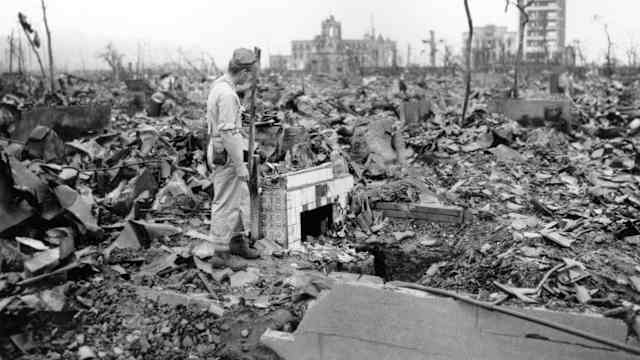After dropping their bombs, the Doolittle Raiders continued on to China where they hoped to land at airfields controlled by Nationalists fighting the Japanese. A violent thunderstorm and fuel gauges running close to empty, however, testified that the intended plan was not possible. “Our only course of action was to climb up to what we thought was a safe altitude and fly until we ran out of fuel and bailed out,” Cole said in an oral history interview posted on the National WWII Museum web site.
All but one of the 16 planes in the Doolittle Raid crashed-landed on or near the Chinese coast. (The other crew landed in the Soviet Union.)
As the storm raged, Cole jumped from the plane into a 9,000-foot abyss of darkness, broken by only the occasional lightning flash. Not knowing what danger lurked in the mountains below, the airman pulled the ripcord so hard that he gave himself a black eye. “My parachute drifted over a pine tree and left me hanging about 12 feet off the ground. I didn’t know that until the fog cleared away and the rain stopped the next morning,” Cole told the San Antonio Express-News. “And being a young kid that was pretty good at climbing trees, it was very easy for me to climb down and readjust my parachute into a backpack and start walking away.” While the Japanese captured two of the American crews, Cole successfully reunited with Doolittle at a nearby camp and was eventually rescued by an American aircraft.











